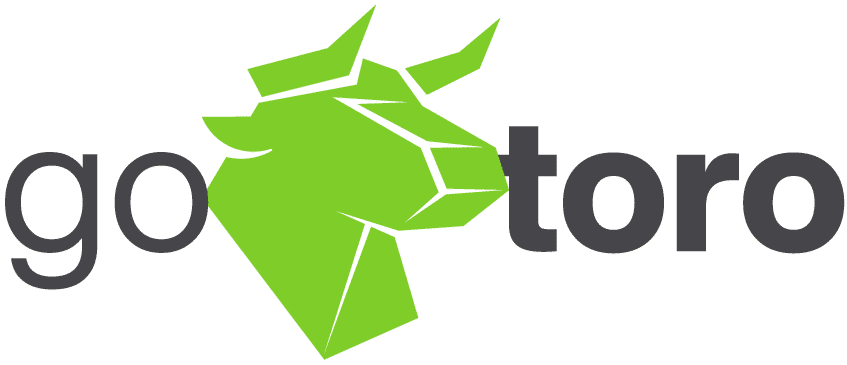In today’s rapidly changing job market, the effectiveness of traditional recruitment channels is dwindling. Companies seeking to attract top talent must now look beyond conventional methods to ensure they reach a diverse and qualified pool of applicants. This shift necessitates a well-thought-out recruitment campaign that not only reaches out but also resonates with a broader spectrum of potential candidates.
Traditional recruitment channels often fall short when it comes to tapping into diverse and untapped talent pools. Their one-size-fits-all approach can inadvertently overlook segments of the workforce that might possess the exact skill sets a company needs. By recognizing these limitations, businesses can better understand the critical need to diversify their advertising strategies as part of their broader recruitment campaign.

1. Understanding the Limitations of Traditional Recruitment Channels
Traditional recruitment methods—such as job boards, recruitment agencies, and even some of the more established online platforms—tend to have a predefined and sometimes narrow audience. These methods often miss reaching diverse and untapped talent pools, which can be pivotal in filling niche roles or bringing unique perspectives to a team.
The primary challenge with these conventional recruitment methods lies in their inability to adapt to the dynamic nature of the job market and the diverse aspirations of modern job seekers. Moreover, these traditional avenues often emphasize quantity over quality, leading to a deluge of applicants, among whom only a few may meet the specific qualifications required. This inefficiency not only extends the hiring process but also impacts the diversity and quality of the applicant pool, which is detrimental to any effective recruitment campaign.
2. The Need for a Diversified Advertising Strategy
To overcome the shortcomings of traditional recruitment channels, it’s imperative to implement a diversified advertising strategy. This approach is crucial for a successful recruitment campaign aimed at reaching a broader and more diverse audience. By diversifying advertising strategies, companies can effectively target and engage with niche markets and specialized professionals who are not actively searching on traditional platforms.
Introducing alternative advertising strategies involves leveraging less conventional platforms like niche job boards, social media channels, and professional forums. These platforms allow for more targeted advertisements, reaching potential candidates on the sites they frequent most, and in a format that resonates with their professional or personal interests. This targeted approach not only enhances the reach of your recruitment campaign but also increases the likelihood of attracting highly qualified and diverse applicants who can drive innovation and growth in your organization.
By expanding the scope of recruitment advertising, companies can create more inclusive and effective recruitment campaigns that capture the attention of hidden talents across various sectors and demographics, thereby enriching their workforce diversity and boosting their competitive edge in the market.
3. Exploring Alternative Advertising Strategies
Innovative approaches in a recruitment campaign are essential to draw in more qualified applicants beyond what traditional methods can achieve. By exploring alternative advertising strategies, companies can tap into untapped talent pools, enriching their workforce with diverse skills and perspectives that might otherwise be overlooked.
Detailing the Attraction of More Qualified Applicants
Alternative advertising strategies involve tailored, strategic campaigns designed to resonate with specific groups of potential candidates. For example, digital campaigns using advanced targeting tools can reach individuals with specific qualifications and job interests. This precision not only increases the efficiency of the recruitment campaign but also ensures that the applicants are better qualified and aligned with the company’s needs.
Discussing the Benefits of Untapped Talent Pools
Reaching out to untapped talent pools through innovative advertising strategies can diversify and strengthen a workforce. These pools often include passive candidates who might not actively be seeking new opportunities but are open to the right offers. By targeting these groups, companies can find unique skill sets and experiences that bring fresh perspectives and drive innovation within the organization.
4. Leveraging Niche Job Boards and Online Communities

To maximize the effectiveness of a recruitment campaign, tapping into niche job boards and active online communities can be particularly beneficial. These platforms provide access to specialized groups, enhancing the chances of finding candidates with specific industry knowledge or technical skills.
Describing Niche Job Boards
Niche job boards cater to specific industries, professions, or demographics, making them valuable for targeted recruitment campaigns. These boards often attract candidates who possess specialized skills and a deeper level of engagement in their fields. By advertising on these platforms, companies can increase their visibility among highly qualified professionals who are more likely to be interested in specific types of job roles or industry-specific opportunities.
Exploring the Role of Online Communities and Social Media
Online communities, including professional networks on social media, forums, and industry-specific groups, play a significant role in modern recruitment strategies. These platforms allow recruiters to interact directly with potential candidates, build relationships, and foster a sense of community around their brand.
5. Utilizing Social Media Advertising
Social media platforms like LinkedIn, Facebook, and Twitter offer powerful tools for promoting job opportunities as part of a comprehensive recruitment campaign. These platforms can reach a wide audience, including those not actively searching for a job but open to new opportunities.
70% of managers said they have had success hiring candidates through social media. This makes perfect sense as that is where the millennial candidates are now found. (Apollo Technical, 2023)
Diving into Strategies for Social Media Platforms
Effective social media recruitment involves more than just posting job ads. It includes creating engaging content that highlights company culture, employee testimonials, and success stories to attract potential candidates. Using targeted ads on these platforms allows companies to reach specific demographics, geographic locations, and individuals with interests aligned with the company’s values.
A prime example is Intuit Canada, which utilizes TikTok as part of its innovative recruitment approach. Emily Durham, a senior recruiter at Intuit, leverages her TikTok account to provide potential candidates with valuable tips on interviewing and resume writing. More than just recruitment, her videos serve to broadcast Intuit’s dedication to work-life balance and a supportive management style, illustrating how companies can use social media to extend their culture and values to a broader audience. (Financial Post, 2024)
Engaging Passive Candidates in Your Recruitment Campaign
Passive candidates—professionals who are not actively seeking a new job but might be open to exciting opportunities—can be a gold mine for recruiters looking to fill positions with top-tier talent. Engaging these candidates effectively requires a nuanced approach that differs from targeting active job seekers. Here’s how a refined recruitment campaign can tap into this valuable resource:
Understanding Passive Candidates
Firstly, it’s important to understand who passive candidates are and what might motivate them to consider a change. These individuals are usually employed and might not frequent job boards or respond to traditional job ads. However, they may be swayed by opportunities that offer significant career advancement, better compensation, or align more closely with their personal and professional values.
Benefits of Targeting Passive Candidates
Quality and Fit
Passive candidates often bring a high level of expertise and are proven performers in their current roles. Because they’re not actively looking for a change, they are less likely to apply for multiple positions simultaneously, which can mean a higher quality of hire when they do express interest.
Reduced Competition
Since passive candidates are not actively applying for jobs, there’s typically less competition for their attention compared to active job seekers. This presents an opportunity for companies to make an impactful impression without the noise of competing offers.
Long-Term Engagement
Engaging with passive candidates can build a pipeline of potential hires that might become interested in transitioning over time. This long-term engagement helps companies create a talent pool to tap into as future needs arise.
Strategies to Attract Passive Candidates
Personalized Communication
Reach out with personalized messages that acknowledge the candidate’s specific achievements or skills. Tailored communications show that you have done your homework and see them as more than just another applicant.
Showcase Company Culture
Passive candidates need a compelling reason to consider a change. Highlighting your company’s culture, values, and the benefits of working with your organization can pique their interest. Use social media, company blogs, and employee testimonials to paint a vivid picture of what it’s like to be part of your team.
Networking and Referrals
Utilize your existing employees’ networks to connect with passive candidates. Employee referral programs can be especially effective as they come with a pre-existing vote of confidence about your workplace.
Executive Search and Headhunting
For higher-level positions, consider using specialized executive search firms or headhunters who have the expertise and networks to discreetly engage with passive candidates who may not respond to other forms of outreach.
Engaging Content
Create content that resonates with the career aspirations and interests of passive candidates. This can include leadership articles, insights into industry trends, and other professional development resources. Making this content available through platforms where passive candidates are active, like LinkedIn, can attract their attention and start conversations.
Building Relationships
The key to successfully engaging passive candidates is to focus on building relationships rather than immediate recruitment. Regular check-ins, industry updates, and invitations to company events or webinars can keep your organization top of mind. When these candidates decide it’s time for a change, your company will likely be at the forefront of their considerations.
By effectively engaging passive candidates, your recruitment campaign not only fills current vacancies with high-caliber talent but also establishes a foundation for future hiring success, ensuring a robust talent pipeline for strategic growth.
6. Monitoring and Analyzing Campaign Performance in Your Recruitment Campaign

Effective monitoring and analysis of a recruitment campaign are critical to understanding its success and areas for improvement. By focusing on key metrics such as click-through rates, conversion rates, and cost-per-hire, you can obtain a clear picture of how well your recruitment strategies are performing.
Understanding Key Metrics
Click-through rates provide insight into how engaging your advertisements are to potential candidates. A higher click-through rate indicates that your ad content is relevant and compelling enough to prompt potential applicants to want to learn more about your job openings. Conversion rates take this a step further by measuring how many of those who clicked on your ads went on to actually apply for the position. This metric helps assess the effectiveness of your job postings and the overall user experience of your application process. Lastly, cost-per-hire is crucial for evaluating the financial efficiency of your recruitment efforts, encompassing all costs associated with hiring new staff, from advertising to interviewer time.
According to the Saratoga Workforce Index, the national average Cost per Hire in 2022 was $2700. The median Cost per Hire varies widely across industries from around $500 to $3600.
Tools and Methods for Tracking Effectiveness
Various tools and methods are integral to effectively track these metrics. Applicant Tracking Systems (ATS) are robust platforms that manage candidate applications and provide analytics about where candidates are coming from and how they move through your hiring process. These systems can be pivotal for tracking application sources and understanding which channels yield the best candidates.
Google Analytics is another essential tool, especially useful for tracking visitor behavior on your career pages and application portals. By setting up goals and conversion tracking in Google Analytics, you can see not just how many people are applying, but also where they are coming from and what actions they take before submitting an application.
For social media-driven recruitment campaigns, the built-in analytics tools provided by platforms such as LinkedIn, Facebook, and Twitter offer comprehensive data on how your content is performing. These platforms can show detailed engagement metrics, including likes, shares, comments, and detailed demographic information about who is interacting with your posts. This data can help tailor your content to better reach your desired audience.
Moreover, the use of A/B testing is critical in refining your recruitment strategies. By testing different versions of your ads, landing pages, or even email campaigns, you can determine which elements resonate most with potential applicants. This continuous testing allows for ongoing optimization of your recruitment campaign, ensuring that every aspect from the ad copy to the application form is as effective as possible.
By leveraging these tools and focusing on these key metrics, you can not only improve the effectiveness of your recruitment campaign but also ensure that you are making data-driven decisions that align with your hiring goals. This strategic approach to campaign monitoring and analysis helps streamline the recruitment process, reducing costs and improving the quality of your hires.
7. Adapting and Evolving Recruitment Strategies
In the dynamic landscape of talent acquisition, the ability to adapt and evolve your recruitment campaign strategies is crucial. As the workforce changes and new technologies emerge, staying flexible and responsive to these changes can make the difference between attracting top talent and being overlooked.
Emphasizing the Importance of Adaptive Strategies
Successful recruitment campaigns require a proactive approach to adaptation. This means not only reacting to changes in the market but also anticipating shifts in candidate behavior and preferences. By staying agile, your organization can quickly pivot its strategies in response to feedback and emerging trends, ensuring that your recruitment efforts remain effective and competitive.
Encouraging Experimentation with New Platforms and Messaging

Experimentation is key to discovering what resonates with your target audience. This could involve testing different messages across various platforms to see which combinations yield the best results. For instance, while LinkedIn might be ideal for reaching professionals in certain industries, platforms like Instagram or TikTok could be better suited for tapping into younger talent pools. Trying out new forms of content, such as interactive ads or virtual reality job previews, can also provide insights into what engages candidates most effectively. Such experimentation not only helps refine your recruitment strategies but also keeps your approach fresh and engaging for potential applicants.
In conclusion, diversifying your recruitment campaign strategies is essential for tapping into a broader, more qualified pool of talent. By embracing new platforms, experimenting with innovative messaging, and leveraging the insights gained from data analytics, your organization can significantly enhance its talent acquisition efforts. Ready to see these strategies in action? Request a demo from Gotoro today and discover how our advanced solutions can help you revolutionize your recruitment process. Take the first step towards attracting and retaining the top talent your company deserves.


